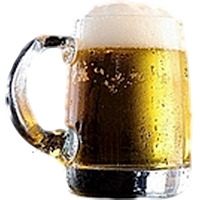BREADBOARD: Breadboards are
used to design circuits in a rapid and easily changed fashion. Wires and components are simply pushed into the holes to
form a completed circuit and power can be applied. One of the main advantages
of using a breadboard is that the components are not soldered and if they are
positioned incorrectly they can be moved easily to a new position on the board.
OSCILLOSCOPE: An oscilloscope is the most important piece of
electronic test equipment. They allow you to see, in great detail, what is
going on with all the voltage level that changes quickly moment by moment in
your circuit.
FUNCTION
GENERATOR: A function generator is
an electronic test equipment used
to generate electrical waveforms.
The signals from function generator represent the periodic value of a given
mathematical function, especially sine, square, triangle and sawtooth
waveforms. These waveforms
can be either repetitive or single-shot. Model 4086AWG is a laboratory grade
synthesized function generator with arbitrary capability. The 4086AWG produces
high purity, low distortion sine waves up to 80 MHz.
HALF WAVE RECTIFIERS:
Half wave rectifier uses the ability of a silicon diode to conduct current
while forward biased and stop current flow while reverse biased. In half wave rectification, either the positive or
negative half of the AC wave is passed, while the other half is blocked.
Because only one half of the input waveform reaches the output, it is very
inefficient if used for power transfer.
FULL WAVE RECTIFIER:
A full-wave rectifier converts the whole of the
input waveform to one of constant polarity (positive or negative) at its
output. Full-wave rectification converts both
polarities of the input waveform to DC (direct current), and is more efficient.
A Full Wave Rectifier is a circuit, which converts
an ac voltage into a pulsating dc voltage using both half cycles of the applied
ac voltage. It uses two diodes of which one conducts during one half cycle
while the other conducts during the other half cycle of the applied ac voltage.
PSPICE: It
is SPICE software, an analog circuit and digital logic simulation software. The full form of SPICE is Simulation Program with Integrated Circuit Emphasis. Now a days it is available for
students to download demo version from the internet, or buy full version, and
run on their personal computers, that is why the
letter "P" is added in its name. PSPICE is a powerful
general purpose analog and mixed-mode circuit simulator that is used to verify
circuit designs and to predict the circuit behavior. It is widely used in electronic
design automation. SPICE solves sets of non-linear differential equations in
the frequency domain,
steady state and time domain and can simulate the behavior of transistor and
gate designs. PSPICE was developed at the University of California at Berkeley
in the mid-1970s, there are enhanced versions of SPICE provided by several software companies. The
heart of your SPICE file is the netlist, which is simply a list of components and the nets (or nodes) that connect them together.
As an example, let’s create a netlist for a simple low-pass RC filter. Just
draw the schematic, then assign names for the resistor, capacitor, voltage
source (R1, C1, VS) and node numbers (1 and 2). Ground is the only exception
whose node is always numbered 0.
PSpice has analog and
digital libraries of standard components, such as NAND, NOR, flip-flops, MUXes,
FPGA, PLDs and many more digital
components. This makes it a useful tool for a wide range of analog and digital
applications.
The circuit design in the PSPICE can contain the following components:
- Independent
and dependent voltage and current sources
- Resistors
- Capacitors
- Inductors
- Mutual
inductors
- Transmission
lines
- Operational
amplifiers
- Switches
- Diodes
- Bipolar
transistors
- MOS
transistors
- JFET
- MESFET
- Digital
gates











